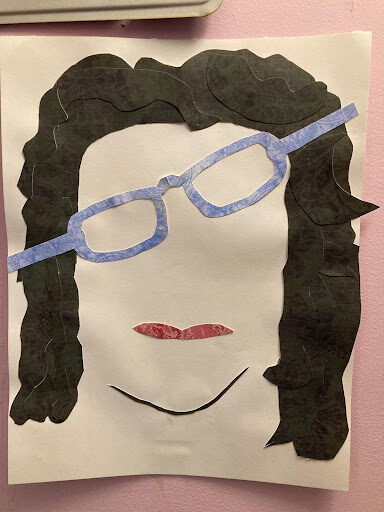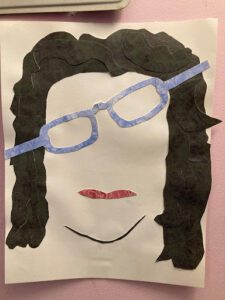Who is an Artist?

I stopped taking art class in 10th grade. On the first day of class, we were asked to do a pencil drawing of a still life. We were given no instruction except to do the drawing. My perspective was off, so the rounded thing I drew came out warped. I got a C-. When I explained to the teacher that I was there to learn — not to already know — she answered that I did a C- drawing. My grades were very important to me – without scholarship, I was not going to college. I dropped the class.
That was in the 1970’s. Since then, I would never have called myself an artist. Maybe, a creative type. Maybe, a crafty type. Maybe a MacGyver type. But not an artist.
Last winter I joined an abstract drawing class. It started in a museum school, so my peers were way beyond me in experience. It’s been quite the journey. Here are the main things that I learned in my first six sessions:
Too many options, too little skill

My classmates had a variety of ways to create. They had favorites that they had been working with for years. Therefore, they had control and technique that I could only watch.
In the first few classes, I didn’t complete anything because I was too busy playing with different media – charcoal, watercolor, pencil, acrylic, papercutting…and thinking about buying other ones, like yupo. It took me until class three or four to decide to settle in to one medium per class.
Even with that promise to myself, I fudged it a bit. We did one exercise that I recommend to anyone: Create ten or so self-portraits in 45 minutes to an hour. It was great fun. I started with pencil, then colored pencil, then pastel, then paper-cutting/collage.
Everyone has a style.

After a few classes, it became clear that my classmates had styles and preferences that had been honed over time. Some were very talented at line drawing, some exceptional with color, some good with watercolor or collage.
By class three, I realized that I could toy with my own style. I have a way with color, it was time to play with that.
After the first six weeks
My peers had all created four or so completed works, suitable to show people. I had two that I was happy with. One that I showed people.

I was disappointed in that. Then, I realized that I did two pieces of art that I was happy with. I.was.happy.with. The self-portrait that I did with cut paper is on my wall now, visible to anyone I see over Zoom.
I was noticing more in the world. My visual curiosity was reawakening.
The setup of the class was that every week there was a theme. We were asked to take pictures of things that matched the themes and to think about the themes before the next class.
Over the six weeks, I took some very good pictures. I paid more attention to frame, to cropping, to light. (See the hawk and the turtle?)
Should I sign up for six more weeks?
It was not an easy decision about whether to keep going with this class and this group of peers. Should I join a more skills-based class with students more at my level? Could I learn from the position of the least skilled member of the class? Was I comfortable with what I had to contribute?
I decided to go on, based mostly on the change in my visual curiosity. I have a lot to learn about drawing. I might need a skills class, somewhere along the line. But, even without technical know-how, I am creating and having fun at it.
Pablo Picasso’s father was an artist and an art teacher. Picasso grew up immersed in art appreciation and free to develop technical skills. He exhibited by the time he was 19. I don’t have to be Picasso.